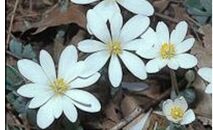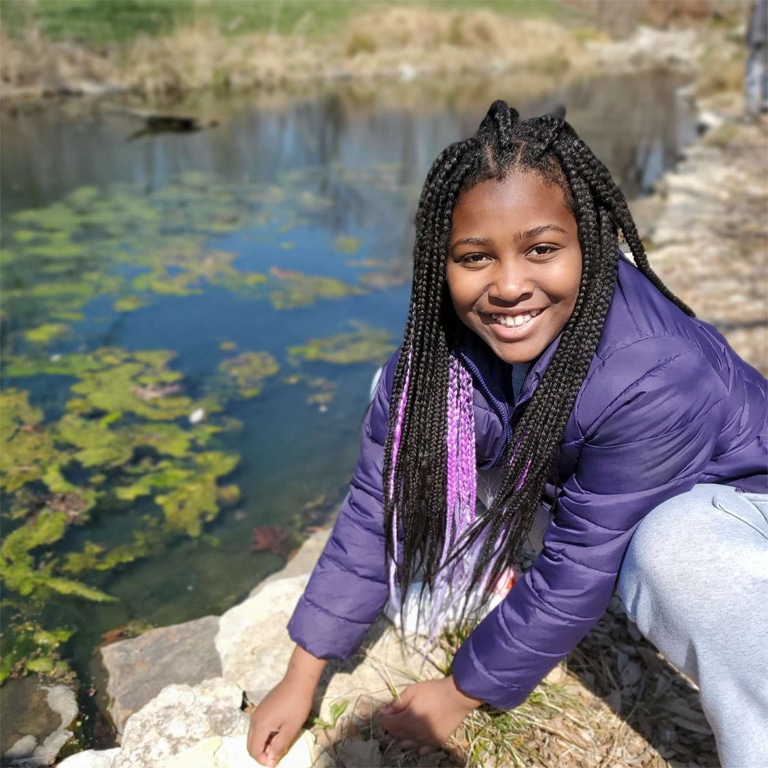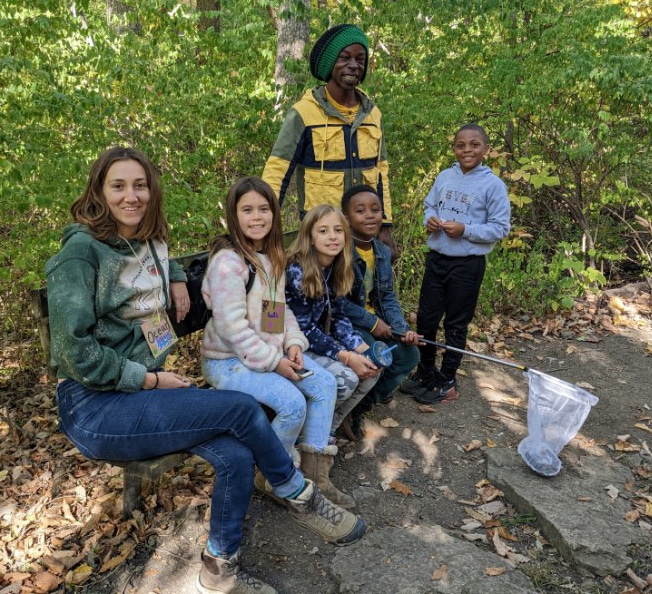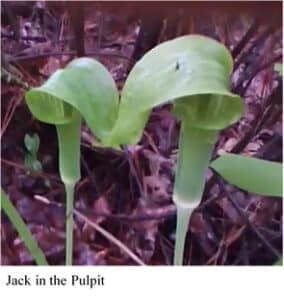 Author – Roberta Vogel-Leutung, Green Works staff
Author – Roberta Vogel-Leutung, Green Works staff
Every mid-winter, I become impatient with winter’s cold, and dreary grays. I find myself wondering if the world around me is ever going to be warm, lively, and colorful again. And every spring, as the days grow longer and warmer, my faith is restored, as I see little signs of life popping out of the leaf litter in my yard and native metro woodlands. In a matter of weeks, the grays, browns, and faded golds of the winter forest floor transform into a carpet of green, white, gold, blue, and purple. The spring ephemeral wildflowers arrive, and the forest takes on a moist, rich scent and texture.
Growing up with the Chicago, Cook County forest preserves as one of my family of 13’s most significant recreation destinations, I learned in our annual search for Jack-in-the-Pulpits, to appreciate how this time of delightful delicacy and color, is short-lived. These forest wildflowers take advantage of the sunlight that temporarily reaches the forest floor, before the leafing out of the shrub and tree layers above them.
These flowers must complete their lifecycles in a matter of weeks, growing, blooming, being pollinated, and setting seed before the dense shade of summer arrives. It is because their opportunity to thrive is so short, that these plants grow in great numbers, with several adaptations for attracting pollinators: bright colors, enticing scents, and nectar guides on their petals. Some even have petals which serve as landing platforms for flying insects.
Spring ephemerals are perennials that sprout mostly from underground bulbs and corms, which they have stored with starch during their previous growing season. They grow close to the ground because there is no competition at this growth level, and this low profile reduces damage from cold winds. Because the weather in the early spring is still too cold for most flying insects, ants and small ground beetles pollinate most of these plants and disseminate their seeds.
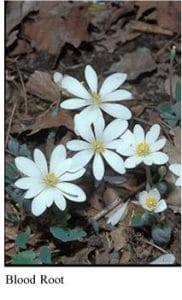 Now is the time to look for spring wildflowers in the Kansas City region, while they are peaking, and through early May. Some of the most common spring ephemerals you will see in our region are, Spring Beauty, Dog Tooth Violet, Toothwort, Dutchman’s Breeches, Virginia Bluebells, Wild Sweet William, May Apple, Wake Robin, Bellwort, Bloodroot, Jack-in-the-Pulpit, and False Rue Anemone. They will be interspersed with longer lived spring bloomers, like Wild Ginger, Wild Geranium, Jacob’s Ladder, Virginia Waterleaf, Solomon’s Seal, False Solomon’s Seal, and several ferns.
Now is the time to look for spring wildflowers in the Kansas City region, while they are peaking, and through early May. Some of the most common spring ephemerals you will see in our region are, Spring Beauty, Dog Tooth Violet, Toothwort, Dutchman’s Breeches, Virginia Bluebells, Wild Sweet William, May Apple, Wake Robin, Bellwort, Bloodroot, Jack-in-the-Pulpit, and False Rue Anemone. They will be interspersed with longer lived spring bloomers, like Wild Ginger, Wild Geranium, Jacob’s Ladder, Virginia Waterleaf, Solomon’s Seal, False Solomon’s Seal, and several ferns.
Trails can be muddy, and easily damaged, this time of year so be sure to check this website for trails that are closed. If this site says the trail is open, or it’s not listed, you can go enjoy it, but bring some extra shoes to change into because it may be muddy. Some trails are paved or mulched, so you can avoid mud, but most spring ephemerals aren’t as visible from those trails.
Check out this listing at Urban Trail
Our favorite trails for Spring Ephemerals that are more lightly traveled, so you can social distance. They are all on Google Maps and the Free version of the All Trails App.
- Indian Creek Trail from 99th and Holmes East (look past the mowed edges in the forest)
Blue River Parkway Trails from Minor Park Tennis Courts South (check for closing)
Fox Hollow Trail behind Lakeside Nature Center on Gregory Blvd in Swope Park
Siloam Mountain Park in Excelsior Springs
Big Bull Creek in Edgerton, KS
Overland Park Arboretum (small fee for entry if not a member)
Camp Branch Glades at 175th and Nall
White Aloe Creek in Parkville
Maple Woods in Kansas City North

